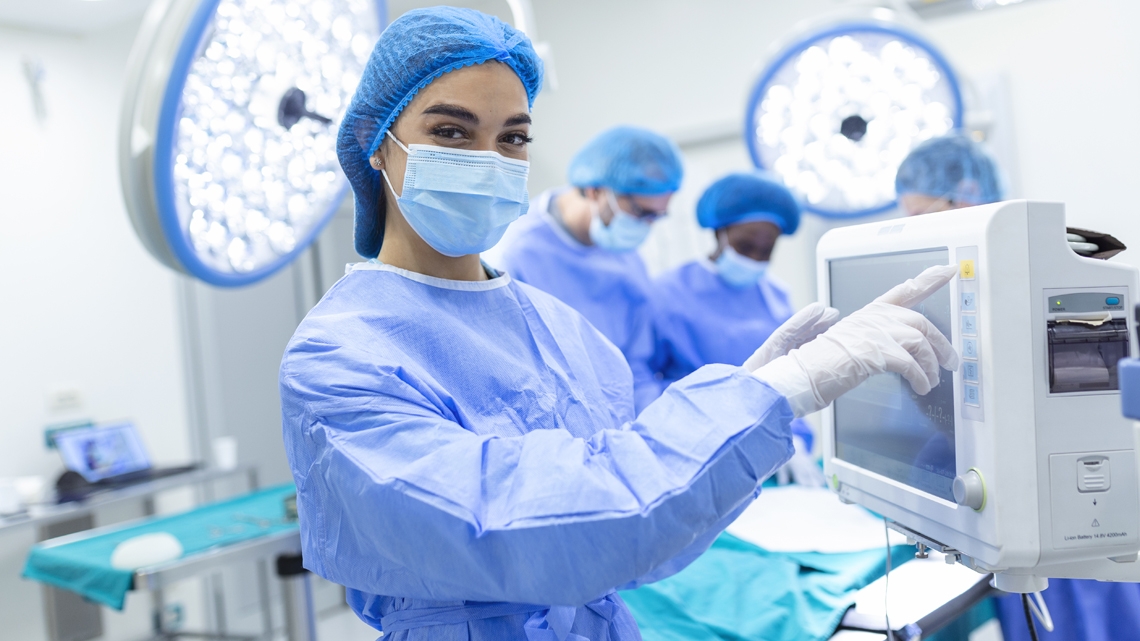
Modern day health care systems heavily relies on high-precision medical equipment to facilitate accuracy in diagnosis, effective treatment, and safe care management. As the clinical environment grows more complex and the expectations of advanced care presents an increased demand for highly dependable, efficient, and safe medical devices. This blog explores why medical equipment quality in healthcare is a nonnegotiable priority, how it impacts patient care, and what measures ensure safety and risk mitigation.
What is the Role of Quality Medical Equipment in Patient Care
Quality medical equipment serves a critical role in the domain of patient care—ranging from initial assessments to diagnosis, treatment, monitoring and follow-up. High grade medical devices facilitate the clinician’s safety to perform procedures efficiently, reducing the chances of error and enabling consistent evidence-based care. In addition, the quality of medical equipment is one of the critical imperatives for informed clinical decision-making, streamlines electronic health records, and information exchange between departments, enhancing overall patient experience. Medical equipment must comply with strict guidelines to ensure that the devices are adherent to standard specifications regarding performance, safety and reliability.
The quality of medical equipment has a direct relationship on the diagnosis precision and treatment results. Advanced imaging, accurate monitoring equipment and durable surgical instruments reduce the chances of error in clinical outcomes. This efficiency can lead to better treatment and increased rates of recovery.
Key Importance of Quality Medical Equipments
Application of high quality medical equipment is a significant requirement in every facet of patient care and facility management. Top tire medical equipment’s directly contributing to advantages such as:
- Accurate and timely diagnostics
Accurate diagnosis is what leads to the right treatment and best quality diagnostic equipment are integral in diseases with clarity and precision. Sophisticated equipment for laboratory analysis, operations, imaging real-time patient monitoring, drastically help decrease the rate of false positive and false negative results. Prompt and accurate detection contributes to intervention at the right time, resulting in enhanced treatment outcomes and faster recovery.
- Enhanced patient safety
Precision quality of medical instruments impacts the accuracy of patient conditions, hence quality equipment plays an essential role in prevention of medical errors, equipment malfunction, and related adverse events in diagnosis. Error-tolerant devices lower the chances of threat of wrong readings, inefficiencies, malfunctions in the midst of critical operations. By deploying certified, long-lasting, and high grade devices, not only increase safety of patients but also creates a safer environment for health professionals performing their duty efficiently.
- Improved patient experience
Patient outcomes can significantly be influenced by the quality of medical equipment used in the intervention stage. From precision accuracy for operations to continuous monitoring, innovative devices pave the way for clinicians to inform their decisions solely on clear evidence and to perform interventions with higher accuracy. The offered quality of equipment determines stability and reliability in its application. Therefore, improving patient experiences with personalized treatment plans requires reliable, and minimally invasive healthcare tools. Employing these measures in turn leads to higher recovery rates, less side effects, and improved patient outcomes.
- Better patient outcomes
The efficiency of diagnostic results has a direct impact on patient recovery time, disease duration, effective treatment plan and improving the safety of clinical outcomes. Ensuring equipment quality aligned with the industry standards, empowered doctors practice disease management more effectively.
- Increased efficiency and better workflow
Accurate and streamlined equipment experiences help significantly reduce downtown, allowing healthcare professionals to manage diagnosis and treatment plans more effectively. Systems with technology integration have facilitated the scope of enhanced reading accuracy, automation and streamlined processes. This relieved professionals from challenges of manual errors, and precision.
- Cost reduction
The initial expenditure for employing high quality equipment might be higher, however the value it facilitates leading to significant margin of cost savings. As a dependable high grade equipment demands fewer repairs, organizations can leverage the advantage of long term lifespan while eliminating the indirect expenses of maintenance.
- Regulatory compliance
Organizations in healthcare must ensure compliance with the governing standard regulations. Adopting the certified quality grades from recognized regulatory boards will help ensure patient safety, protect organizations from serious penalty and reputation damage.
Measures to Safety and Risk Mitigation
- Prevention of equipment-related errors or failures
Regular evaluation, maintenance, quality checks, and staff education eliminate equipment failures and can facilitate accuracy during high-stakes operations.
- Well-designed sterilizable tools for infection control
Adopting sterilizable equipment helps prevent contamination, ensures patient safety and help maintain high standards of infection control.
- Compliance with patient safety protocols
Following pre-determined levels of safety in terms of device operation and ongoing monitoring, contributes to enhanced patient safety in the course of use.
Conclusion
Superior-quality medical equipment has a role beyond compliance or operational effectiveness, it is the strategic choice that shapes reliable, advanced patient care. The application of accurate, and safe medical devices allow healthcare teams to achieve accurate and timely diagnosis, increase efficiency in work patterns, and reduce risk factors through long term value. Healthcare organizations that ensure the grade and quality of medical equipment and tools will stay ahead in a technology-driven and competitive environment. Therefore, making quality equipment a priority is a core requirement to build trust, efficiency, and long-term clinical excellence.
To read more, visit The Healthcare Insights.
